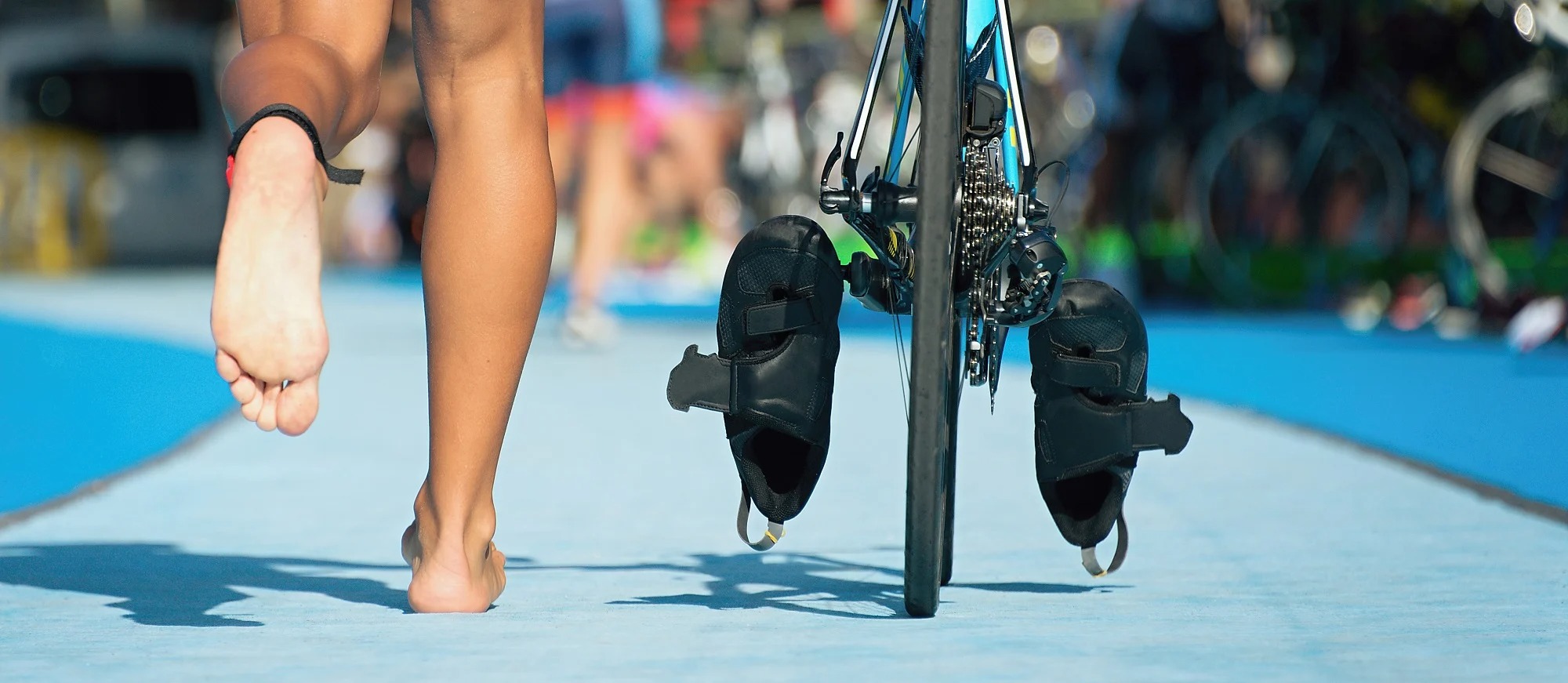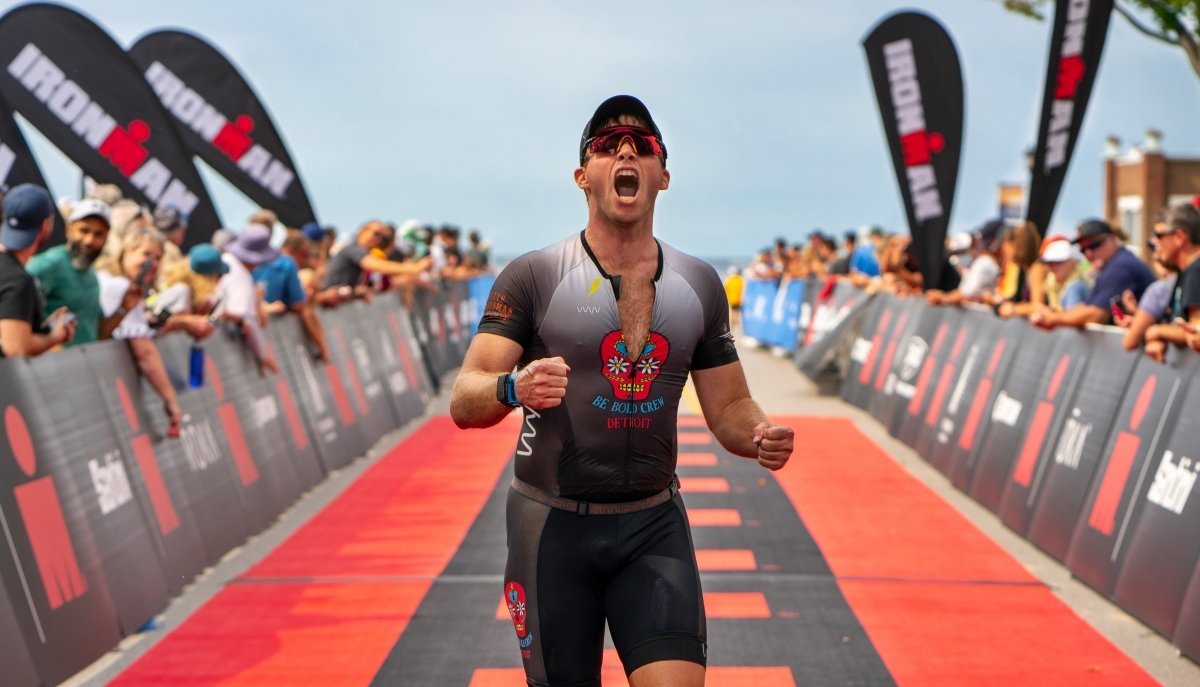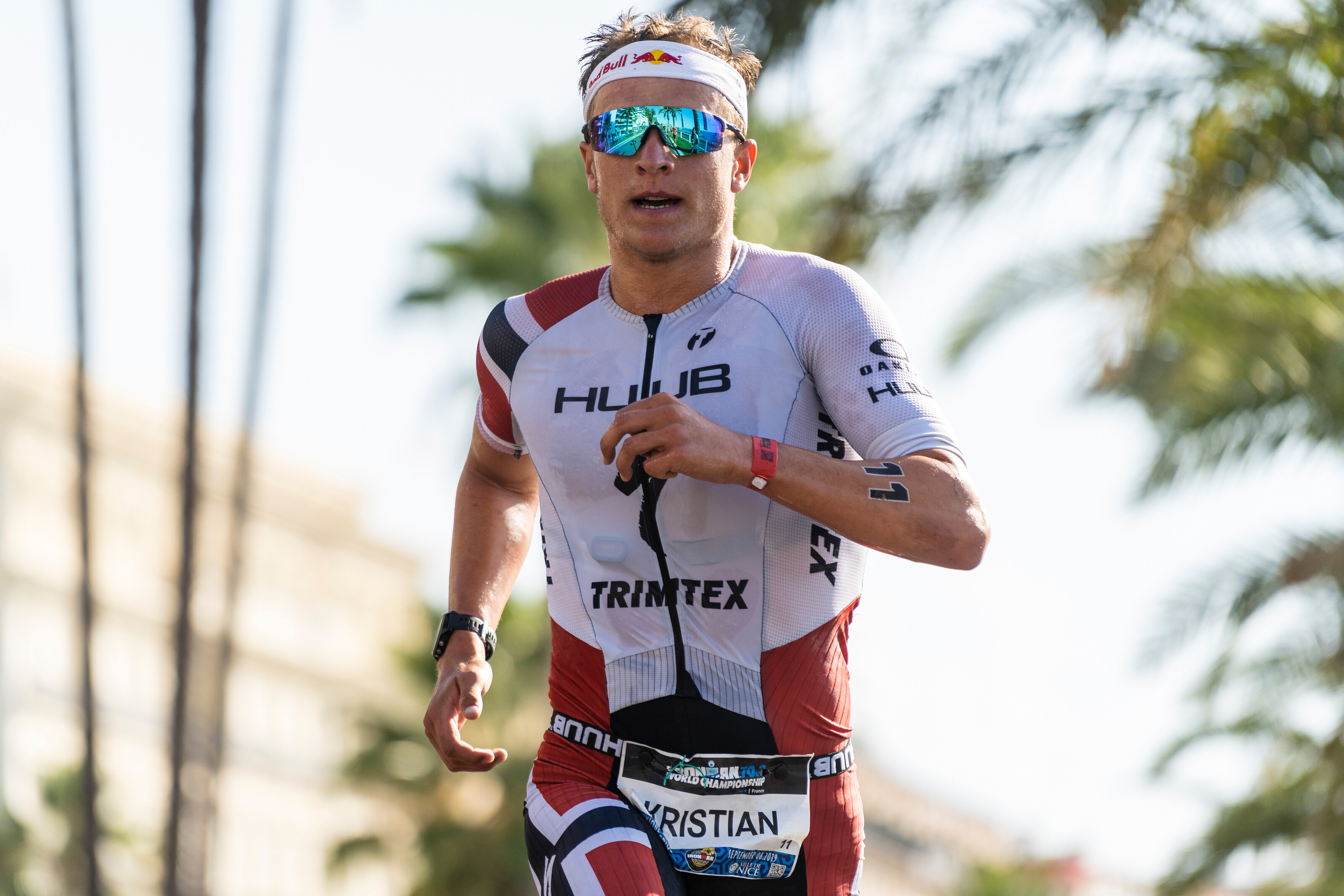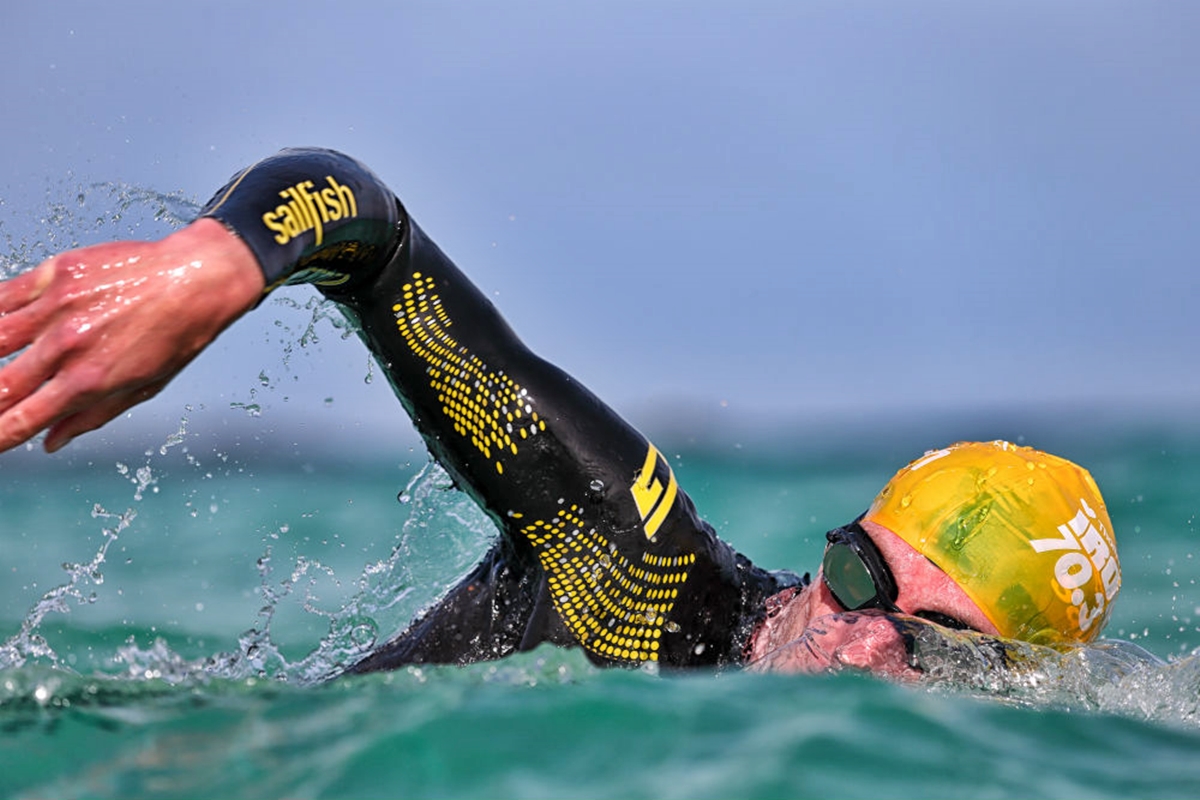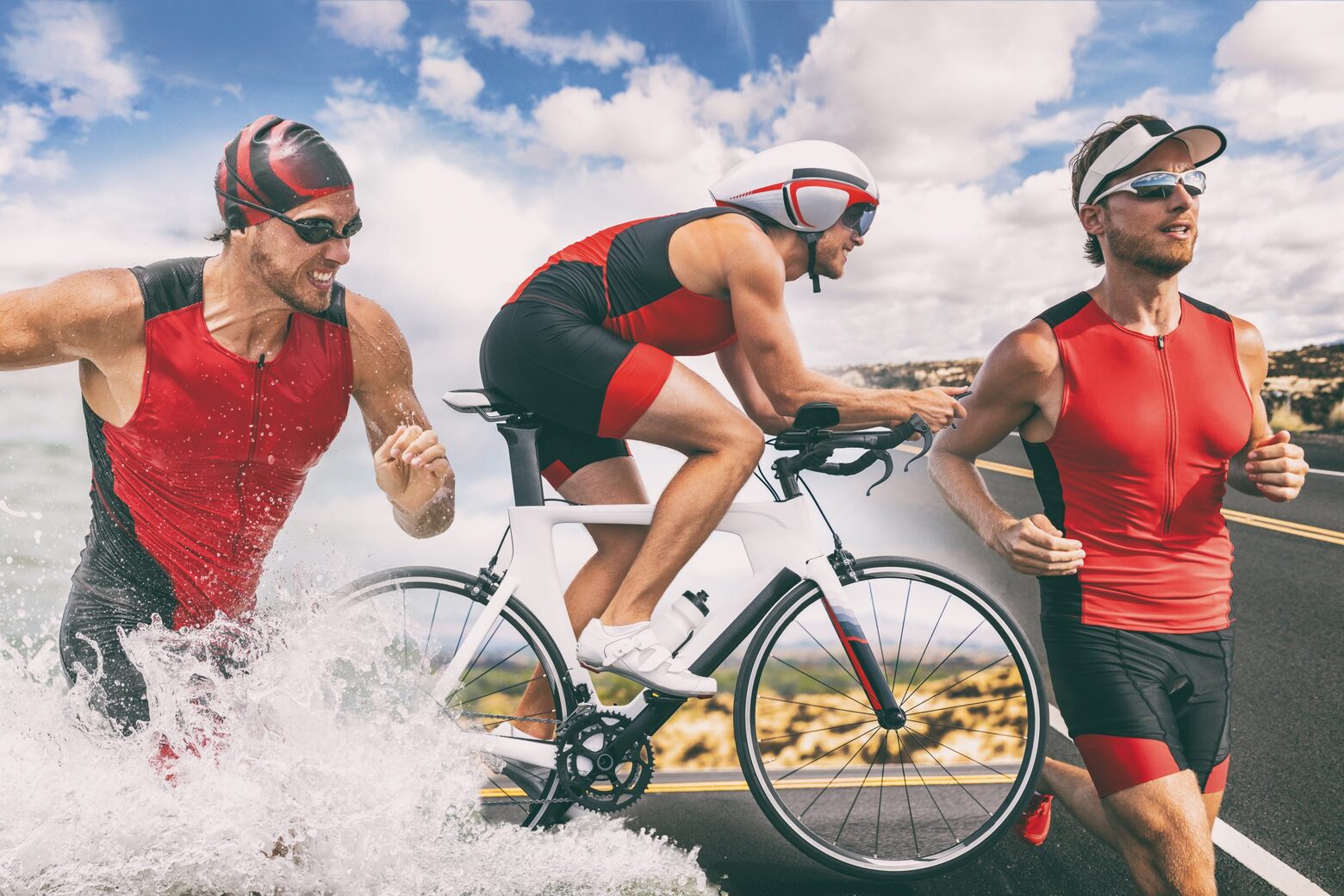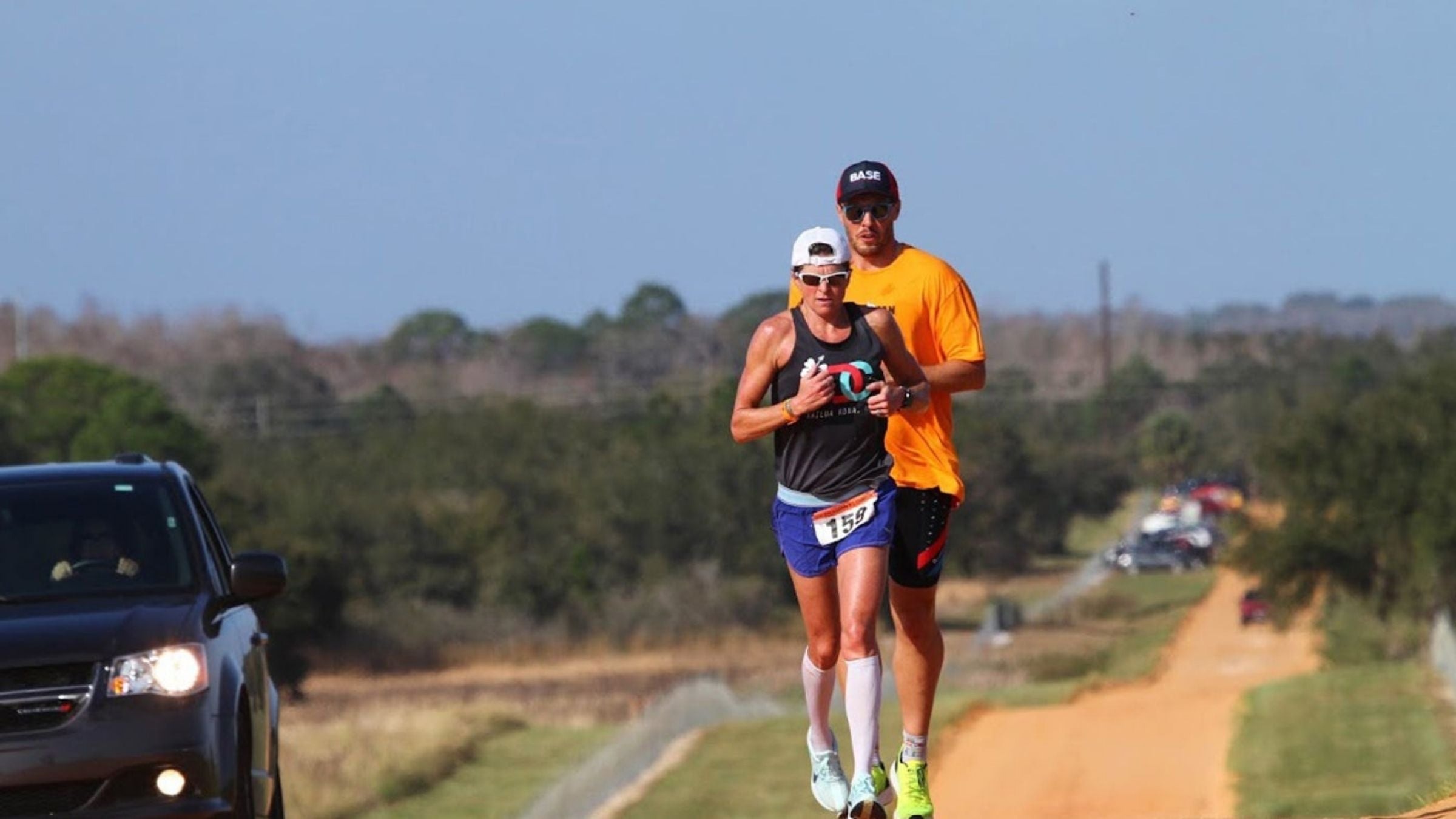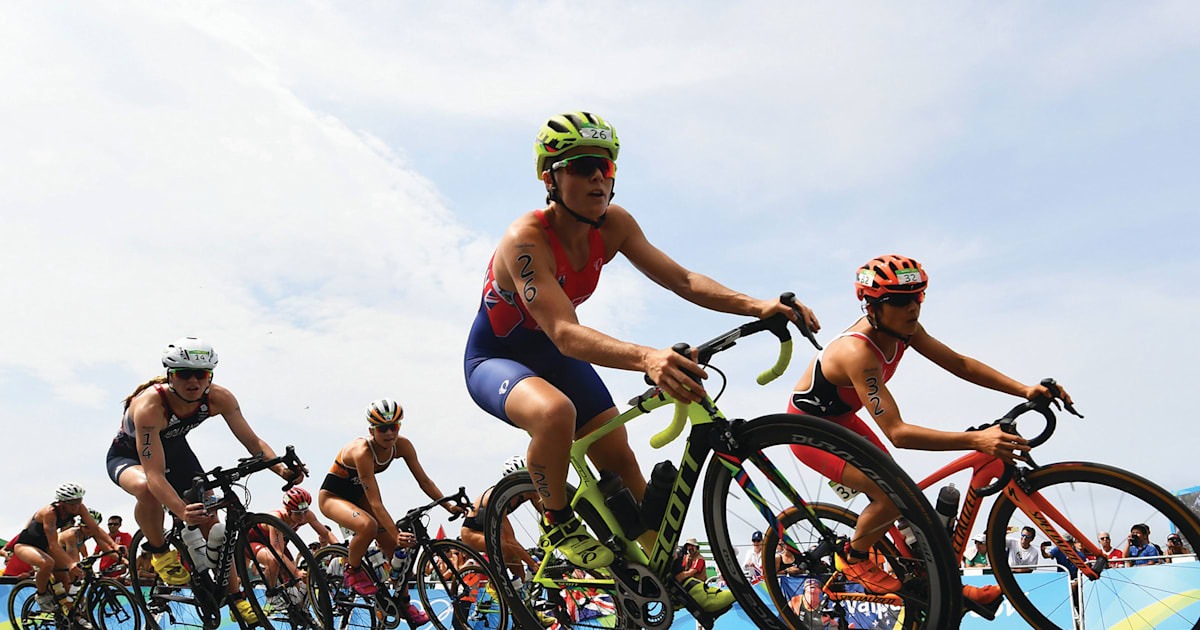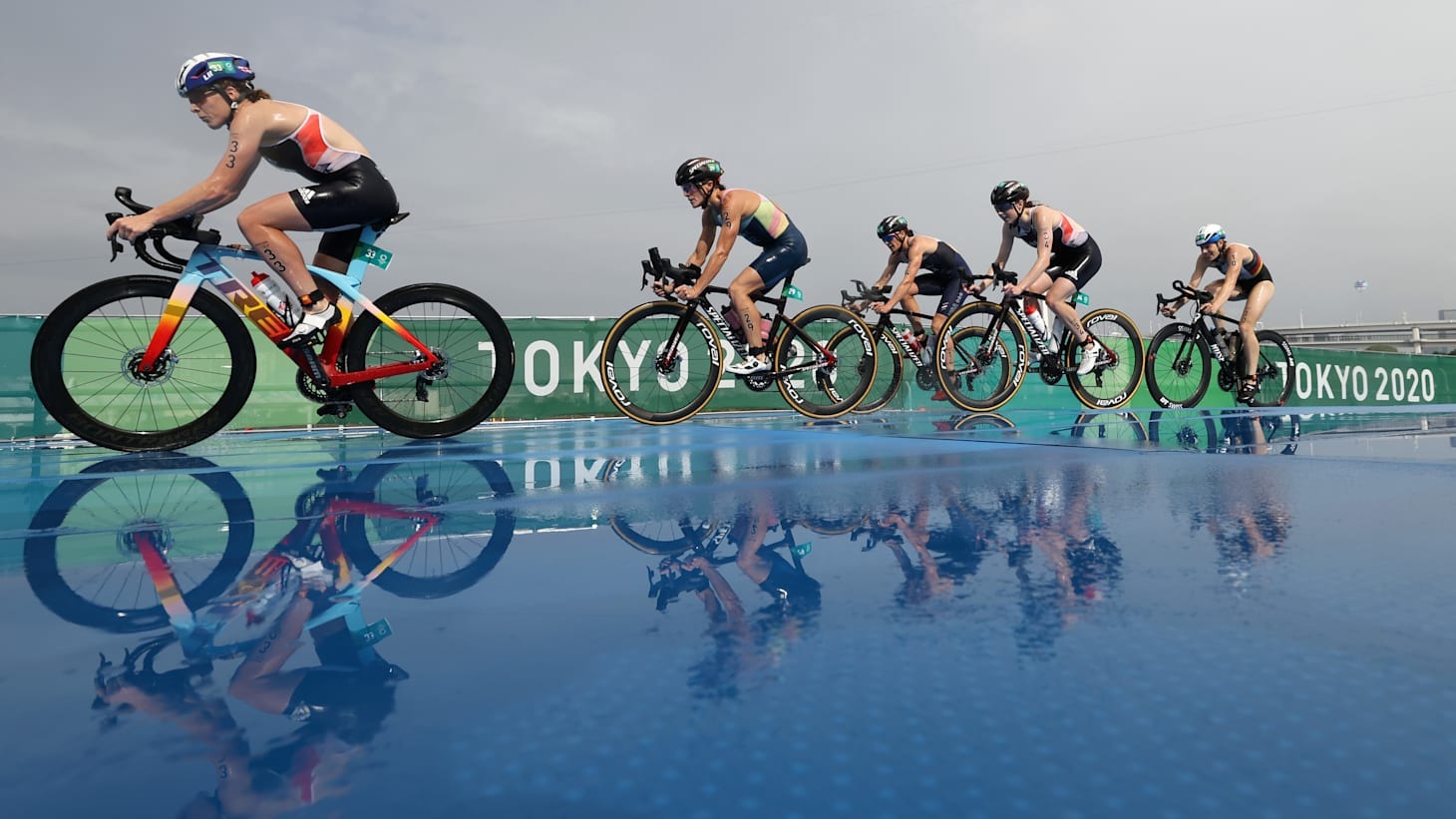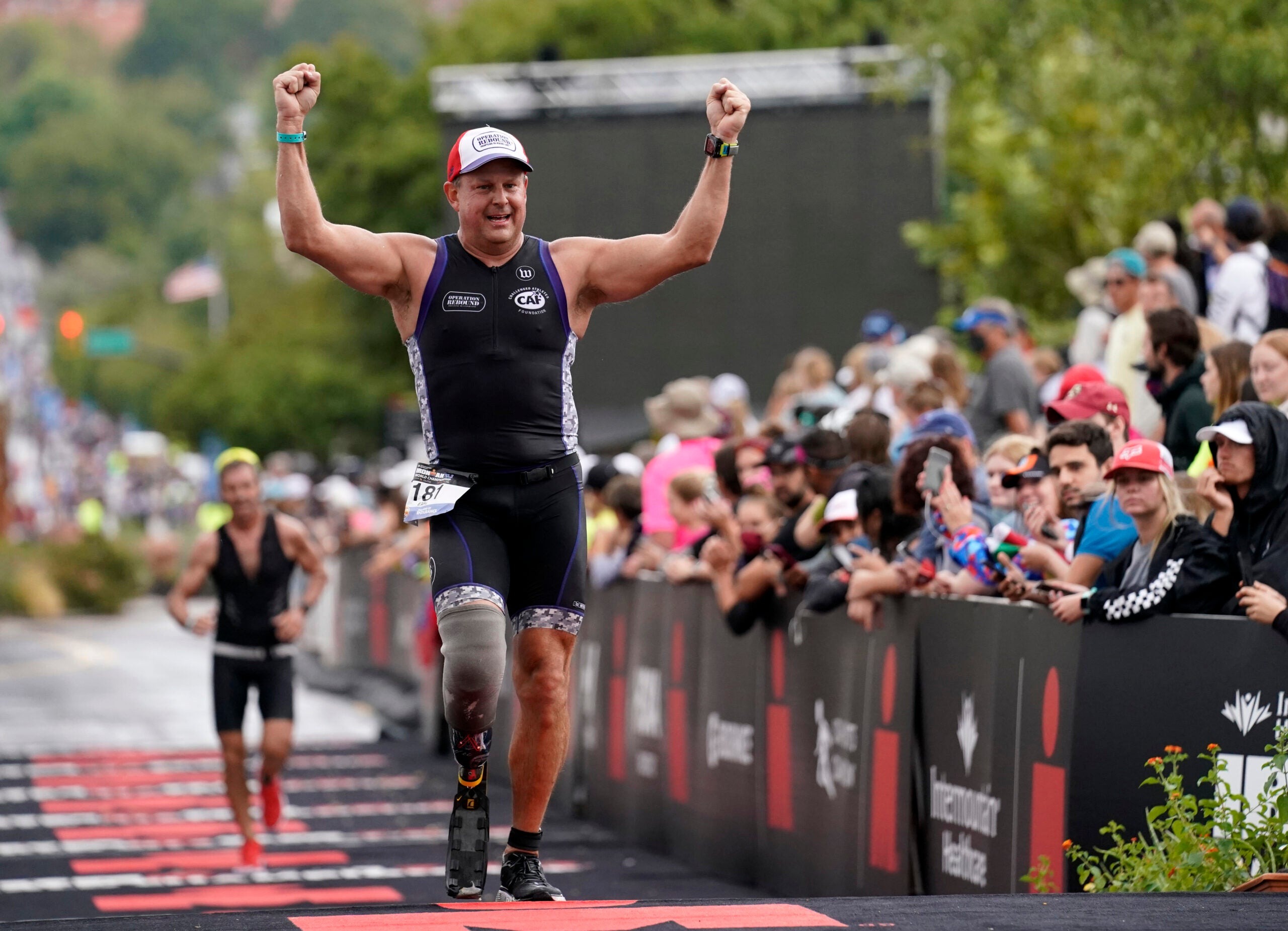

Featured
What Is Half Ironman Triathlon
Modified: January 2, 2024
Discover what a half Ironman triathlon is and how it compares to other race distances. Get featured insights on training, distances, and race experiences.
Overview
Half Ironman triathlon, also known as Ironman 70.3, is a challenging endurance race that combines swimming, cycling, and running. It is a popular choice for athletes looking to push their limits and test their physical and mental strength. Half Ironman triathlons are often seen as a stepping stone towards the ultimate goal of completing a full Ironman race.
Ironman 70.3 covers a distance of 70.3 miles (113 kilometers), hence the name. It consists of a 1.2-mile (1.9-kilometer) swim, a 56-mile (90-kilometer) bike ride, and a 13.1-mile (21.1-kilometer) run. The race is famous for its grueling and demanding nature, requiring participants to endure hours of continuous physical exertion.
Unlike other triathlon distances, the Half Ironman is a test of both endurance and strategy. Athletes must pace themselves throughout the race to ensure they have enough stamina to complete each segment. The transitions between swim, bike, and run are also crucial, as efficiently changing gear and refueling can make a significant difference in overall time and performance.
The Half Ironman format allows athletes to experience the diverse challenges of each discipline. From the water, where swimmers battle waves and currents, to the bike leg, where participants pedal through varying terrains and elevations, and finally to the run, where endurance is put to the ultimate test, this race demands a comprehensive set of skills and training.
Completing a Half Ironman is no small feat and requires months of dedicated training and preparation. It is a testament to an individual’s commitment, discipline, and determination. The sense of accomplishment and pride that comes with crossing the finish line can be truly life-changing.
Participating in a Half Ironman triathlon is not only a personal challenge but also an opportunity to connect with a supportive community of like-minded individuals. The camaraderie and encouragement from fellow competitors can provide an extra boost of motivation when the going gets tough.
Whether you are an experienced triathlete looking to take on a new challenge or a beginner looking to push your limits, the Half Ironman triathlon offers a unique and rewarding experience. It is a chance to push your physical and mental boundaries, set new goals, and prove to yourself that anything is possible.
Distances
The Half Ironman triathlon, also known as Ironman 70.3, is aptly named for the distances involved in each discipline. This challenging race encompasses a 1.2-mile (1.9-kilometer) swim, a 56-mile (90-kilometer) bike ride, and a 13.1-mile (21.1-kilometer) run.
The swimming leg of the race spans 1.2 miles and takes place in open water, typically a lake or ocean. Athletes may encounter choppy waters, currents, and variable weather conditions, making the swim both exhilarating and potentially challenging. Swimmers must navigate the course, often marked by buoys, with the goal of reaching the transition area for the next segment of the race.
Following the swim, participants transition to the bike leg, a grueling 56-mile ride. This portion of the race takes athletes through a mix of terrains, including flat stretches, rolling hills, and sometimes even mountainous regions. The aim is to maintain a steady pace and conserve energy for the final leg of the race.
After completing the bike leg, athletes transition once again to the final discipline—the run. The Half Ironman run consists of a half marathon, covering 13.1 miles. This portion of the race can be mentally and physically demanding as competitors battle fatigue and test their endurance. Athletes must pace themselves and find the strength to push through the final miles before reaching the finish line.
It is important for participants to note that the distances mentioned are standard for Half Ironman races, but there may be slight variations depending on the specific event. Always check the race details to confirm the exact distances for the swim, bike, and run.
Accurately completing the required distances is a key aspect of the Half Ironman triathlon. Athletes must carefully plan their training to develop the necessary endurance and speed to conquer each segment successfully. The ability to transition smoothly between disciplines is also a crucial part of achieving an optimal race time.
Overall, the Half Ironman triathlon challenges athletes both physically and mentally, pushing them to their limits across these demanding distances. It requires a combination of strength, endurance, and strategic planning to tackle each segment of the race and ultimately cross the finish line.
Swim
The swim leg of the Half Ironman triathlon is the starting point of the race and can be both exhilarating and daunting for participants. Covering a distance of 1.2 miles (1.9 kilometers) in open water, the swim requires a combination of physical strength, technique, and mental resilience.
Swimmers enter the water in waves, with competitors grouped based on age and gender. As participants dive in and start swimming, they must quickly adapt to the conditions of the open water. This can include dealing with rough waves, currents, and other environmental factors that may impact their swim.
In order to navigate the swim course, swimmers must follow a route marked by buoys. These markers guide athletes in staying on course and reaching the designated swim finish area. It is important to study the course and familiarize oneself with the buoy placements before the race, in order to swim efficiently and avoid getting off track.
During the swim, it is crucial for athletes to maintain a steady pace and conserve energy. Unlike pool swimming, open water swimming requires additional skills such as sighting, which involves lifting the head periodically to ensure proper direction. Sighting helps swimmers stay on course and avoid swimming unnecessary extra distance.
Furthermore, drafting can be advantageous in open water swimming. This involves swimming closely behind or to the side of another swimmer, taking advantage of their slipstream to conserve energy. However, it is important to swim legally and avoid creating any hindrance to other competitors.
Before the swim leg begins, participants may choose to wear a wetsuit for buoyancy and added warmth in colder water temperatures. However, wetsuit usage is subject to race rules and regulations, so it is important to check the guidelines beforehand.
While swim training is essential for the Half Ironman triathlon, it is equally important to practice open water swimming whenever possible. This will help athletes become more comfortable in unpredictable water conditions and build the necessary skills for a successful swim leg.
Remember, the swim leg is just the starting point of the Half Ironman triathlon. Finishing strong in the swim sets the stage for the challenging bike and run segments that lie ahead. With proper technique, training and mental preparation, swimmers can conquer the swim and move forward with confidence in the race.
Bike
The bike leg is a critical component of the Half Ironman triathlon and covers a distance of 56 miles (90 kilometers). This segment requires cyclists to demonstrate endurance, strength, and strategic decision-making as they navigate a variety of terrains and conditions.
Participants embark on the bike leg after transitioning from the swim. The transition area provides an opportunity to change into cycling gear, such as a helmet, cycling shoes, and appropriate attire. It is essential to be well-prepared and organized during this transition to minimize time spent in the transition area.
The bike course generally takes athletes through a mix of terrains, including flat stretches, rolling hills, and sometimes even challenging climbs. Participants must adapt and adjust their pace according to the terrain they encounter. A key factor in succeeding during the bike leg is the ability to maintain the right cadence and gear selection to optimize energy and efficiency.
It is important to note that the bike leg of the Half Ironman triathlon takes place on roads open to traffic. Participants must adhere to traffic rules and exercise caution while cycling. Drafting, which involves closely following another cyclist to reduce wind resistance, is typically not allowed in most races. Each participant must maintain a safe distance between themselves and other cyclists at all times.
Hydration and nutrition are crucial during the bike leg. Athletes should have a plan in place to fuel themselves adequately throughout the race. This might include carrying energy gels, bars, or electrolyte drinks on their bike or making use of aid stations along the course. It is essential to practice the intake of fluids and nutrition during training to avoid any digestive issues or dehydration during the race.
Furthermore, it is beneficial to be aware of the course profile and any specific challenges it presents. Knowing when to conserve energy and when to push through climbs or headwinds can make a significant difference in overall performance. Strategically pacing oneself and maintaining a steady effort is vital in order to have enough energy left for the subsequent run leg.
Training for the bike leg of the Half Ironman triathlon should encompass a combination of endurance rides, interval training, and long-distance rides. Hill repeats and simulated race efforts will help improve strength and simulate race-day conditions. Regular maintenance and proper adjustments to the bike are also essential to ensure optimal performance during the race.
Finishing strong on the bike leg sets the stage for the final discipline—the run. With proper training, nutrition, and a smart race strategy, cyclists can set themselves up for a successful performance at the Half Ironman triathlon.
Run
The run leg of the Half Ironman triathlon is the final discipline of the race and covers a distance of 13.1 miles (21.1 kilometers). It is a true test of endurance, mental strength, and determination as athletes push through fatigue to reach the finish line.
After completing the bike leg, participants transition to the run. The transition area provides an opportunity to change into running gear, such as comfortable shoes, breathable clothing, and any required accessories. It is crucial to efficiently transition from the bike to the run to minimize any lost time.
Running a half marathon immediately after cycling requires a different kind of physical and mental readiness. The accumulated fatigue from the swim and bike segments can make the run challenging, but with proper training and pacing, athletes can conquer this final leg of the race.
Pacing is key during the run leg. It is important to find a sustainable pace that allows for a consistent rhythm and avoids burning out too quickly. Athletes must listen to their bodies, manage energy reserves, and make strategic decisions about when to push harder and when to conserve energy.
Courses for the run leg can vary, from flat roads to diverse terrains and elevation changes. It is important to be familiar with the course ahead of time to mentally prepare and adjust pacing accordingly. Running hills or uneven terrain requires adaptability and possibly a change in stride or technique.
Hydration and nutrition play a crucial role during the run leg. Aid stations are typically available along the course, providing water, electrolyte drinks, and sometimes energy gels or snacks. Athletes should have a plan in place for fueling and hydrating during the run, practicing this during training to avoid any digestive issues or dehydration on race day.
In addition to physical endurance, mental resilience is vital during the run leg. Fatigue and discomfort may set in, but staying focused, maintaining a positive mindset, and breaking the run into smaller, manageable goals can help push through these challenging moments.
Proper run training is essential for success in the run leg of the Half Ironman triathlon. This includes a combination of long-distance runs, interval training, and tempo runs to build endurance, speed, and mental toughness. Incorporating brick workouts that involve a bike-to-run transition can also help athletes adapt to the demands of running after cycling.
As athletes approach the finish line, the culmination of months of training and dedication, the support of fellow competitors, volunteers, and spectators can provide an extra boost of encouragement. The final stretch of the run is an opportunity to dig deep, summon inner strength, and embrace the sense of accomplishment that comes with completing the Half Ironman triathlon.
Transition Areas
In the world of triathlon, transition areas are critical elements that allow athletes to progress smoothly from one discipline to the next. The Half Ironman triathlon consists of two transition areas – T1 (from swim to bike) and T2 (from bike to run).
Transition 1 (T1) is where participants transition from the swim to the bike leg of the race. As athletes emerge from the water, they make their way to the transition area. In T1, they change into their cycling gear, including clothing, helmet, shoes, and any other necessary equipment.
Organizing the transition area is crucial for a seamless and efficient transition. Triathletes typically lay out their gear in a logical and organized manner. Towels are often used to mark the area and provide a clean surface to stand on while changing. Essential items such as goggles, swim caps, and wetsuits are usually removed and neatly placed aside.
Once athletes have changed into their cycling attire, they must securely fasten their helmet before touching their bike. Safety is paramount, and it is essential that helmets are worn and properly secured throughout the bike leg.
Exiting the transition area, athletes mount their bikes and begin the cycling portion of the race. The way the transition area is set up varies depending on the race, but generally, participants run with their bikes until they reach a designated mount line.
Transition 2 (T2) marks the shift from the bike leg to the final run leg of the Half Ironman triathlon. As athletes dismount their bikes, they enter the transition area where they will change into their running gear.
Similar to T1, organization is key in T2. Participants locate their designated spot, rack their bike, and take off their cycling gear. Shoes, socks, race belts, and any other necessary items are laid out strategically to ensure a smooth transition.
After changing into their running shoes and apparel, athletes make their way out of the transition area to commence the final run segment of the race. It is crucial to ensure that all equipment and belongings are properly secured so as not to impede other athletes or risk any penalties.
Efficiency and speed are essential in transition areas. Practicing transitions during training allows athletes to become familiar with the process, optimize their setup, and reduce valuable time spent in the transition area.
In the Half Ironman triathlon, smooth transitions can make a significant difference in overall race time. Minimizing the time spent switching from one discipline to the next can give competitors a competitive edge and help maintain momentum throughout the race.
Transition areas are not only functional spaces but also a hub of energy and excitement. The atmosphere is filled with the buzz of athletes preparing for the next leg of the race, encouraging and supporting one another in their pursuit of personal and athletic achievement.
Training
Preparing for a Half Ironman triathlon requires a disciplined and structured training plan. To succeed in this demanding endurance event, athletes must focus on developing their overall fitness, building endurance, and honing their skills in each discipline.
An effective training plan typically includes a combination of swim, bike, and run workouts, as well as incorporating strength training and rest days for recovery. It is important to gradually increase training volume and intensity to avoid overtraining and minimize the risk of injury.
Swim training for the Half Ironman involves building endurance in the water, improving technique, and increasing speed. Regular pool sessions, open water swims, and drills that focus on proper form and breathing technique can help athletes become efficient swimmers and develop the necessary stamina for the race.
Bike training is a crucial component of Half Ironman preparation, as the bike leg covers a significant distance. Long rides to build endurance, interval training for speed and strength, and hill training to improve climbing ability are all vital aspects of bike training. It is also important to practice cycling in different terrains and conditions to prepare for race day challenges.
Run training focuses on building endurance and improving speed for the half marathon distance. Long runs, tempo runs, and interval training help develop running stamina and pace. Gradually increasing mileage while also incorporating strength and mobility exercises can improve running efficiency and prevent injuries.
In addition to the three main disciplines, strength training is a valuable component of Half Ironman training. Strengthening the core, stabilizing muscles, and improving overall body strength can enhance performance and reduce the risk of injury. Exercises such as squats, lunges, planks, and resistance training can be incorporated into a training regimen.
Rest and recovery are equally important in a Half Ironman training plan. Adequate rest days allow the body to repair and rebuild, preventing overtraining and reducing the risk of burnout. Active recovery activities, such as yoga, swimming or light cycling, can help promote recovery and improve overall performance.
Mental preparation is also key in training for a Half Ironman. Building mental toughness, visualization techniques, and developing strategies to overcome challenges can help athletes stay focused and motivated during the race.
Consistency, commitment, and progressive training are the foundations of a successful training plan for a Half Ironman triathlon. Giving yourself enough time to train, seeking guidance from a coach if needed, and listening to your body for rest and recovery are keys to reaching your peak physical condition and achieving your race day goals.
Nutrition and Hydration
Nutrition and hydration play a crucial role in the performance and success of athletes during a Half Ironman triathlon. Proper fueling and hydration strategies are essential to maintain energy levels, enhance endurance, and prevent fatigue and dehydration throughout the race.
During training, it is important to experiment with different nutrition and hydration plans to determine what works best for your body. Each individual may have unique needs and preferences, so it is important to find the right balance that optimizes performance.
Prior to the race, focus on consuming a well-balanced diet consisting of lean proteins, complex carbohydrates, and healthy fats. This will provide the necessary nutrients to support training and recovery. Incorporate plenty of fruits, vegetables, whole grains, and lean proteins into your meals to fuel your body for long training sessions.
Leading up to the race, it is essential to properly hydrate by consuming an adequate amount of water and electrolytes. Hydration should be a priority in the days leading up to the race, as well as during training sessions.
During the race, aim to start with a full tank of glycogen stores by consuming a pre-race meal that is easily digestible and rich in carbohydrates. This will provide a source of energy for the early stages of the race.
During the swim leg, hydration is not typically a concern, but it is essential to remain well-hydrated leading up to the race. Make sure to hydrate properly after the swim leg and before transitioning to the bike leg.
On the bike leg, plan for consistent hydration by consuming fluids at regular intervals. Depending on your preference and the race conditions, you may choose to carry water bottles or use a hydration pack or system on your bike. Energy gels, chews, or bars can also be consumed to maintain adequate energy levels throughout the ride.
Transitioning from the bike to the run, continue to hydrate and fuel your body. Aid stations along the run course provide water, electrolyte drinks, and sometimes snacks or gels. Take advantage of these stations to replenish fluids and consume small amounts of easily digestible carbohydrates.
It is important to listen to your body’s cues during the race. If you feel thirsty or fatigued, this may be a sign that you need to hydrate or refuel. Practice your nutrition and hydration plans during training to gauge how your body responds and make adjustments accordingly.
Post-race recovery is also important for proper nutrition. Consuming a post-race meal that includes carbohydrates to replenish glycogen stores and protein for muscle repair and recovery is crucial. Additionally, continue to hydrate after the race to replenish lost fluids.
Remember that nutrition and hydration are highly individualized, so it is important to find what works best for you through trial and error during training. Consulting with a registered dietitian or sports nutritionist can provide personalized guidance and recommendations for meeting your specific nutritional needs.
Race Day
Race day is the culmination of weeks or even months of training and preparation for the Half Ironman triathlon. It is a day filled with anticipation, excitement, and the opportunity to put all your hard work to the test.
As you wake up on race day, it’s essential to stick to your routine and avoid trying anything new. Eat a familiar breakfast that includes a balance of carbohydrates and protein to provide sustained energy throughout the race. Double-check your gear and ensure you have everything you need for each discipline.
Arrive at the race venue early to allow plenty of time for pre-race preparations. Follow the race organizers’ instructions for check-in, body marking, and gear setup. Utilize the time to warm up your body with light exercises and stretches, mentally visualize your race plan, and find a calm and focused mindset.
When it comes time to line up for the swim start, position yourself appropriately based on your swimming ability and speed. Listen for any race instructions or safety briefings before entering the water. Stay focused and composed as the excitement builds for the start of the race.
During the swim leg, maintain a steady pace and avoid getting caught up in the frenzy of the start. Find your rhythm, practice your breathing technique, and follow the designated course markers. If you encounter any challenges in the water, remain calm and adapt accordingly.
Upon exiting the water and making your way to the transition area, stay composed and focused as you change into your cycling gear for the bike leg. Be efficient in your transition, remembering to hydrate and fuel adequately before mounting your bike.
During the bike leg, maintain a consistent yet sustainable pace that allows you to conserve energy for the run. Follow the designated bike course, remain aware of your surroundings, and adhere to traffic rules and safety precautions. Stay hydrated by consuming fluids regularly and fuel yourself with nutrition that keeps your energy levels high.
Transitioning from the bike to the run, take a moment to refuel and hydrate before embarking on the final leg of the race. Pace yourself and settle into a comfortable rhythm as you begin the run. Stay mentally strong, break the run into smaller milestones, and draw on the support of fellow competitors and spectators along the way.
Throughout the run leg, continue to hydrate at aid stations and fuel your body with small amounts of easily digestible carbohydrates. Monitor your pace and adjust as needed, maintaining a sustainable effort while pushing yourself to finish strong.
As the finish line comes into view, summon your last reserves of energy and unleash a final burst of speed. Soak in the sense of accomplishment and pride as you cross the finish line, knowing that you have conquered the Half Ironman triathlon.
Celebrate your achievement and take time to rest and recover after the race. Reflect on your performance, learn from the experience, and set new goals for the future. Remember that every race is a journey, and the most important thing is the growth, development, and enjoyment that comes from participating in the sport of triathlon.
Conclusion
The Half Ironman triathlon, or Ironman 70.3, is a challenging and rewarding endurance race that combines swimming, cycling, and running. It pushes athletes to their limits, both physically and mentally, as they strive to complete the 1.2-mile swim, 56-mile bike ride, and 13.1-mile run.
Training for a Half Ironman requires dedication, discipline, and consistency. A well-structured training plan that includes swim, bike, and run workouts, as well as strength training and rest days, is essential for success.
During the race, efficient transitions, proper nutrition, and hydration play a crucial role. Smart pacing, adapting to the course, and listening to your body are key components to achieving your race day goals.
The journey towards a Half Ironman is not just about reaching the finish line but also about personal growth, resilience, and camaraderie. The triathlon community is filled with support and encouragement, providing a sense of belonging and motivation throughout the training and racing experience.
Completing a Half Ironman is a significant accomplishment, but the impact goes far beyond race day. It instills a sense of confidence, perseverance, and a mindset that anything is possible. The lessons learned and the physical and mental strength gained can be applied to all aspects of life, creating a lasting positive impact.
Whether you are a seasoned triathlete or a beginner looking to push your limits, the Half Ironman triathlon offers an incredible journey and a chance to redefine your own boundaries. Embrace the challenges, celebrate the successes, and savor the journey as you embark on this remarkable test of endurance, strength, and determination.

